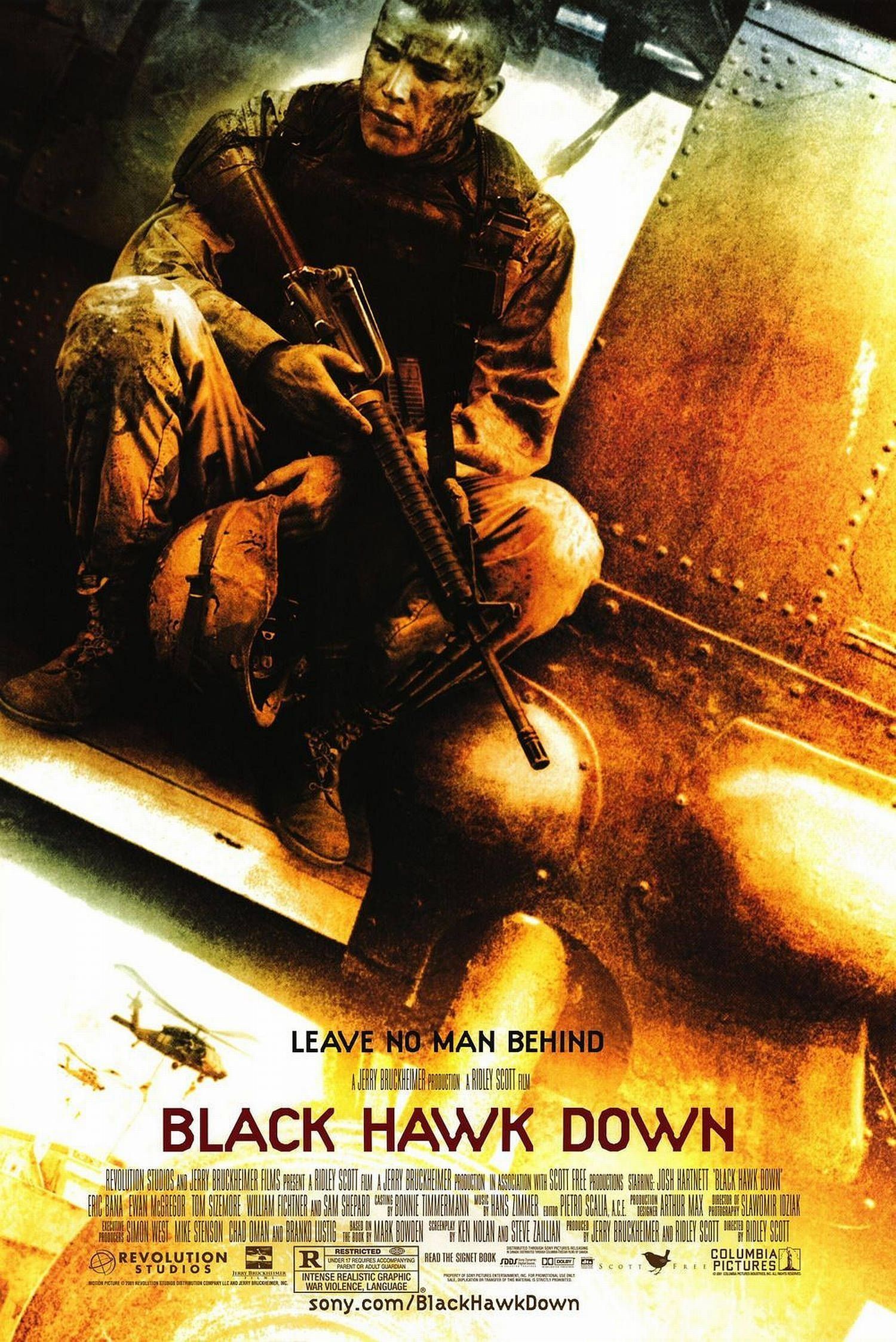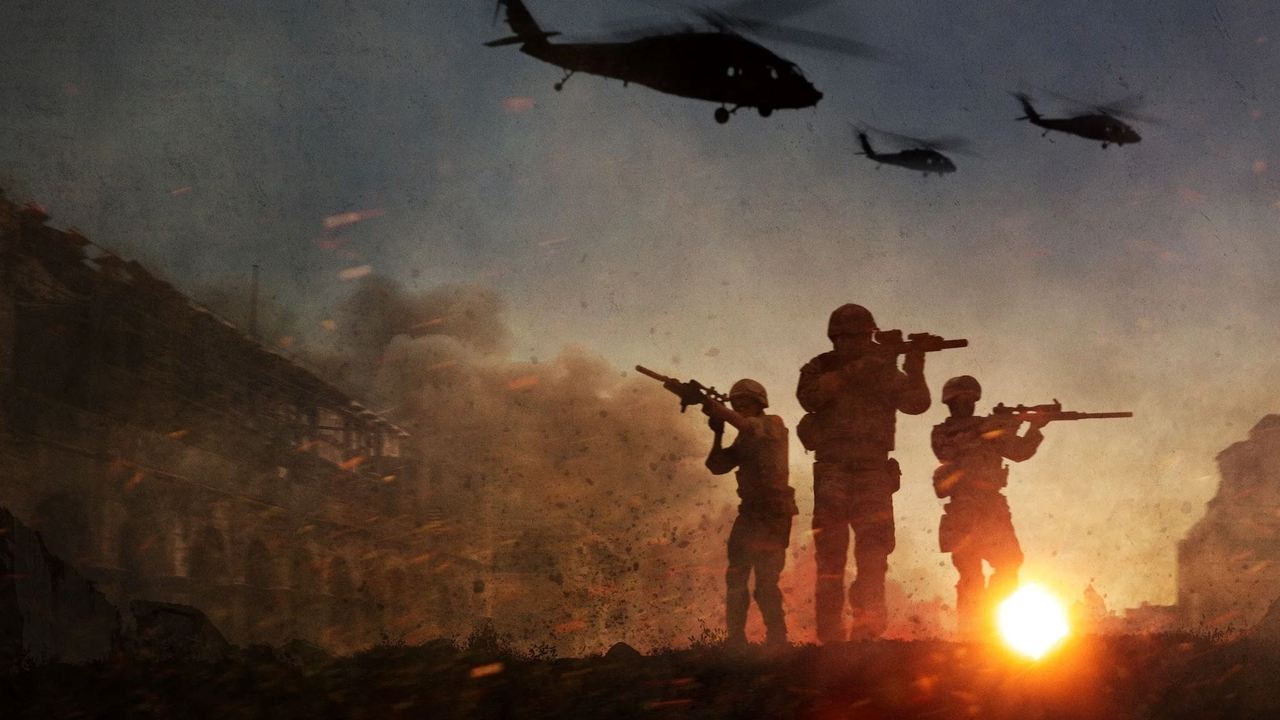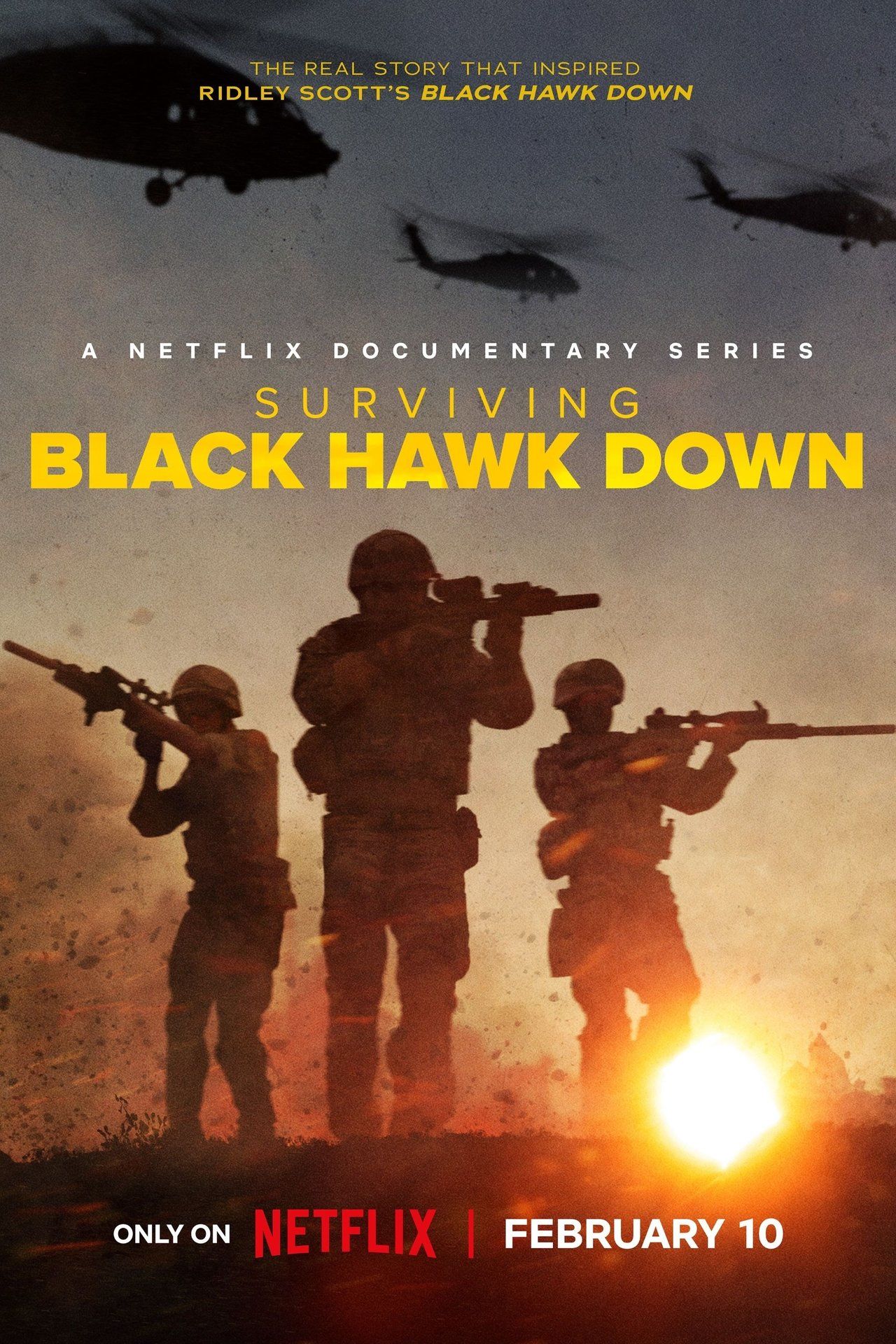The events that unfolded in Mogadishu, Somalia, on October 3 and 4, 1993, remain a truly powerful and often discussed chapter in modern military history. It's a story that, you know, really captured the world's attention, especially after the book and movie brought it to a wider audience. For many, the phrase "Black Hawk Down" brings to mind images of intense urban combat and extraordinary bravery against overwhelming odds, and that's pretty much what happened. But beyond the immediate chaos, there's a deeper, more human story about the individuals who were there, and what their lives became after those incredibly difficult days.
People often wonder about the soldiers, pilots, and medics who faced such incredible danger. What became of them? Did they go back to a normal life, or did that experience shape their path forever? This isn't just about a historical event; it's about the very real people who lived through something most of us can barely imagine. Their courage, their struggles, and their paths forward offer a really compelling look at resilience, and that's, in a way, what we'll explore here.
So, we're going to take a closer look at what happened to the Black Hawk Down crew, those brave souls who were part of Operation Gothic Serpent. We'll explore the mission's background, the intense battle itself, and then, perhaps most importantly, what became of some of the key individuals involved. It's a chance to remember their sacrifice and to, you know, understand the lasting impact of such a pivotal moment. This story, you see, continues to resonate, even decades later.
- Real Kung Fu Little Steamed Buns Ramen
- Harbor House Inn Elk
- Hunts Photo And Video
- Blue And White Illustrated
- I Accidentally Stole The Bad Boys Kiss
Table of Contents
- The Mogadishu Mission: A Quick Look Back
- The Day Everything Changed: October 3, 1993
- The Fate of the Crew and Ground Forces
- Lasting Impact and Lessons Learned
- Frequently Asked Questions
- Remembering Their Story: A Continuing Legacy
The Mogadishu Mission: A Quick Look Back
Back in 1993, Somalia was facing a really terrible famine and civil unrest. Warlords, you know, controlled different parts of the country, making it very hard for aid to reach the people who needed it most. The United States, as part of a larger UN effort, sent in a special operations unit, Task Force Ranger, to help stabilize the situation. Their main job was to capture Mohamed Farrah Aidid, a powerful warlord whose forces were making things even worse for everyone. This mission, called Operation Gothic Serpent, was supposed to be quick, a swift strike to grab Aidid's top lieutenants and get out. It seemed like a straightforward plan, yet events would soon take a very different turn, as a matter of fact.
The Day Everything Changed: October 3, 1993
On that fateful Sunday, October 3, 1993, Task Force Ranger launched what was meant to be a routine daylight raid. Their target was a building in the Bakara Market area of Mogadishu, where Aidid's top advisors were meeting. The plan involved fast-roping from Black Hawk helicopters, securing the target, and then moving out with the captured individuals. Things, however, went wrong very quickly. What was supposed to be a short mission stretched into a grueling, nearly 18-hour firefight, and that's really where the story of the "Black Hawk Down" crew truly begins.
Super 61 and Super 64: The First Helicopters Down
The mission started, and everything seemed okay at first, you know, like any other operation. But then, things turned incredibly dangerous. Somali militiamen, armed with rocket-propelled grenades (RPGs), struck a major blow. The first Black Hawk helicopter, call sign Super 61, piloted by Chief Warrant Officer 3 Cliff Wolcott and Chief Warrant Officer 2 Donovan Briley, was hit. It crashed into the streets below, and that was, in a way, a truly shocking moment for everyone involved. Ground forces immediately tried to reach the crash site, facing heavy enemy fire all the while.
- Ronnie Coleman Police Officer
- How Old Is Luh Tyler
- Toronto Things To Do
- Mark Sloan Of Greys Anatomy
- Radio Coffee And Beer
Then, about an hour later, another Black Hawk, Super 64, piloted by Chief Warrant Officer 3 Michael Durant and Chief Warrant Officer 2 Ray Frank, was also hit by an RPG. This helicopter, too, spun out of control and crashed a few blocks away. The crashes created two separate, desperate battlegrounds in the heart of the city. These moments, honestly, changed the entire nature of the operation, turning a raid into a desperate fight for survival for the downed crews and the soldiers trying to rescue them.
The Rescue Attempts and the Night Convoy
With two helicopters down, the mission shifted from capturing targets to rescuing the stranded soldiers. Ground teams and other helicopters tried to get to the crash sites, but they faced intense, constant gunfire from every direction. The streets were, you know, a very dangerous maze. The fighting continued through the afternoon and into the night. It became clear that the original plan was completely gone, replaced by a desperate struggle to survive and extract everyone.
As darkness fell, a large rescue convoy, made up of UN forces including Pakistani and Malaysian troops, finally pushed into the city. This convoy, it's almost hard to imagine, faced its own brutal fight just to reach the trapped Americans. It was a long, harrowing journey through hostile territory, and it took many hours. The combined efforts of these different forces, you know, eventually allowed for the extraction of the remaining American soldiers, though not without further losses. This night, apparently, became a true test of endurance and courage for everyone.
The Fate of the Crew and Ground Forces
The Battle of Mogadishu was incredibly costly. In the end, 18 American soldiers lost their lives, and 73 were wounded. Two Medal of Honor awards were given out for extraordinary bravery during the battle. Beyond the numbers, however, are the individual stories of the people who were there. Their experiences, you know, varied wildly, from heroic last stands to miraculous rescues and enduring physical and emotional scars. It's a very human story, really, of survival and loss.
Those Who Made the Ultimate Sacrifice
The 18 American soldiers who died in Mogadishu came from various units, including the 160th Special Operations Aviation Regiment (SOAR), the Army Rangers, and Delta Force. Their sacrifices were, you know, truly profound. For example, Chief Warrant Officer 3 Cliff Wolcott and Chief Warrant Officer 2 Donovan Briley, the pilots of Super 61, perished in the initial crash. At the Super 64 crash site, two Delta Force snipers, Sergeant First Class Randy Shughart and Master Sergeant Gary Gordon, famously volunteered to be inserted to protect the injured pilot, Michael Durant. They fought until they ran out of ammunition and were, sadly, killed by the mob. Their actions, you know, earned them both the Medal of Honor, the highest military award, and that's a very significant thing.
Other brave soldiers, like Sergeant First Class Earl Fillmore, Sergeant First Class Matt Rierson, and Staff Sergeant Daniel Busch, also lost their lives fighting on the ground, trying to reach the downed helicopters or defend their positions. Each person who fell that day left behind families and friends, and their stories are, you know, a stark reminder of the extreme risks involved in such operations. Remembering them, honestly, helps us understand the true cost of conflict.
The Captured and the Rescued
Chief Warrant Officer 3 Michael Durant, the pilot of Super 64, was the sole survivor of his crew at the crash site after Shughart and Gordon were killed. He was, in fact, captured by Aidid's militia. His capture became a major focus of the subsequent efforts. Durant was held captive for 11 days, enduring a really tough ordeal, before being released through negotiations. His survival, you know, was a testament to his resilience and the diplomatic efforts made to secure his freedom. His story, arguably, brought a very personal face to the events of that day.
The rest of the American forces were eventually extracted during the "Mogadishu Mile," a desperate dash on foot by soldiers who couldn't fit into the rescue convoy, running under fire to a safer rendezvous point. This harrowing escape, you know, really showed the incredible determination of the soldiers to get out alive. Many were wounded, but they kept going, and that's, in a way, a powerful image of human spirit.
The Survivors and Their Paths Forward
For those who survived the Battle of Mogadishu, the experience left an undeniable mark. Many continued their military careers, serving in other conflicts, while others eventually left the service. Michael Durant, for instance, retired from the Army in 1998. He later wrote a book about his experience, "In the Company of Heroes," sharing his story with the world. He has, you know, often spoken publicly about his time in Somalia, offering insights into the human side of the conflict.
Other veterans of the battle, like Sergeant Major (Ret.) Kyle Lamb, a Delta Force operator, went on to have distinguished careers, often sharing their experiences and lessons learned with new generations of soldiers. Some, you know, found new callings outside the military, becoming authors, motivational speakers, or simply living quiet lives, forever changed but moving forward. Their journeys, in some respects, show the varied ways people cope with and integrate such profound experiences into their lives. It's a long road for many, really.
Many survivors have maintained strong bonds with each other, forming a tight-knit community that understands the unique shared experience of that day. They often gather for anniversaries, remembering their fallen comrades and supporting each other. This continued connection, you know, is a testament to the powerful bonds forged in extreme circumstances. You can find out more about the broader context of special operations forces on our site , which covers a bit about their history and roles.
Lasting Impact and Lessons Learned
The Battle of Mogadishu had a really significant impact on U.S. military policy and operations. It led to a major re-evaluation of how the U.S. conducts urban warfare and special operations. There was, you know, a greater emphasis placed on having overwhelming force, proper armored support, and clear exit strategies for missions. The event also influenced how the U.S. approached interventions in complex, unstable regions, making leaders more cautious about putting troops in harm's way without very clear objectives and sufficient resources. It was, in short, a very hard lesson.
Beyond the policy changes, the human stories from Mogadishu continue to inspire and teach. The bravery of the soldiers, the selflessness of those who tried to save their comrades, and the resilience of the survivors are, you know, lessons that still resonate today. The incident, arguably, remains a powerful reminder of the unpredictable nature of conflict and the incredible courage of those who serve. It's a story that, as a matter of fact, really highlights the human element in warfare.
For those interested in the broader historical context of military engagements and their aftermath, you might find more information on this page . The events of Mogadishu, you know, truly underscore the importance of remembering history and the sacrifices made by individuals in uniform. It's a story that, really, should not be forgotten, and that's, you know, why we still talk about it.
Frequently Asked Questions
- Crystal Bridges Museum Of American Art Photos
- Brennans On The Bayou
- %D9%BE%D8%B1%D9%86%D8%AF%D9%87 %D8%A8%D8%B1 %D8%B1%D9%88%DB%8C %D8%B4%D8%A7%D8%AE%D9%87 %D8%AF%D8%B1%D8%AE%D8%AA
- Hunter S Thompson Daily Routine
- Jet Avatar The Last Airbender



Detail Author:
- Name : Colten Bernier
- Username : amarvin
- Email : pbernhard@gmail.com
- Birthdate : 1986-05-27
- Address : 5230 Gorczany Prairie Suite 040 South Brayanshire, UT 79147
- Phone : (870) 415-1879
- Company : Halvorson Inc
- Job : Bindery Worker
- Bio : Et voluptatibus qui veniam et qui ut. Id eum dolorum harum et ea. Maxime consequatur alias omnis accusamus temporibus laudantium maxime.
Socials
facebook:
- url : https://facebook.com/catharine1665
- username : catharine1665
- bio : Porro corporis optio deleniti laborum iste et rerum ipsum.
- followers : 4864
- following : 2645
instagram:
- url : https://instagram.com/roobc
- username : roobc
- bio : Ea facilis voluptate dignissimos impedit. Laboriosam sunt deleniti aut nihil quia.
- followers : 5275
- following : 2175

